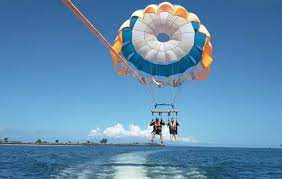The Goa game is a captivating and deeply strategic board game that has charmed enthusiasts around the globe. Designed by Rüdiger Dorn and first published in 2004, Goa is set during the age of exploration, when Portugal was establishing colonies in India—particularly in Goa, the crown jewel of its eastern empire. This game blends historical context with tactical gameplay, offering players a rewarding and challenging experience.
In this article, we will explore what makes the Goa game a modern classic, how it’s played, why it’s popular among serious gamers, and answer some frequently asked questions to help you get started.
What is the Goa Game?
The Goa game is a Euro-style board game that focuses on resource management, auction mechanics, and strategic planning. It is designed for 2 to 4 players, with a typical playtime of about 90 to 120 minutes. The game does not involve direct conflict or luck-based mechanics like dice rolling, making it a cerebral and skill-driven experience.
Setting and Theme
Set during the Portuguese colonial expansion in India, the game reflects historical elements like spice trading, shipbuilding, and colonization. The players represent Portuguese traders who aim to build the most prosperous trading empire in Goa. While the game uses this historical theme as a backdrop, its real strength lies in its elegant mechanics and balanced gameplay.
Gameplay Overview
The game is divided into two parts, each consisting of four rounds. During each round, players engage in various phases, including:
1. Auction Phase
Players bid on tiles that provide different types of resources, colonists, or development opportunities. This phase is crucial because bidding wisely can set the tone for your entire strategy.
2. Action Phase
Players take a number of actions (starting with 3 and potentially increasing to 5 as the game progresses). Possible actions include:
- Colonizing new lands
- Increasing spice production
- Building ships
- Advancing on development tracks
- Drawing expedition cards
Each decision in this phase can greatly affect your long-term position.
3. Development Tracks
One of the core mechanics is the development tracks, which allow players to enhance their capabilities. There are five tracks: Colonies, Ships, Expedition Cards, Income, and Actions. Advancing along these tracks grants bonuses and additional efficiency.
Why the Goa Game Stands Out
Strategic Depth
One of the defining features of the Goa game app is its strategic depth. It’s often compared to games like Puerto Rico and Power Grid due to its tight resource management and emphasis on long-term planning.
Replayability
Thanks to randomized tile placement and variable player strategies, each game of Goa unfolds differently. You’ll never play the same game twice, making it highly replayable.
Elegant Design
There’s little downtime between turns, and the game scales well across different player counts. The rules are straightforward once learned, but the decision space remains rich and complex.
Tips for Playing the Goa Game
If you’re new to Goa or looking to improve your strategy, here are a few essential tips:
- Bid Carefully: Overspending during the auction can leave you starved for cash during crucial turns.
- Diversify Early: Invest in a range of development tracks to keep your options open.
- Focus on Income: The sooner you increase your income, the more flexibility you’ll have in later rounds.
- Watch Opponents: Pay attention to other players’ development and avoid competing directly unless you’re confident of winning.
Goa Game vs. Other Strategy Games
The Goa board game occupies a unique place in the Eurogame genre. Compared to similar titles, it tends to be more methodical and less reliant on player interaction. Here’s a quick comparison:
| Game | Player Interaction | Strategy Level | Randomness |
| Goa | Low | High | Low |
| Puerto Rico | Medium | High | Low |
| Agricola | Medium | High | Medium |
| Catan | High | Medium | High |
If you enjoy the economic and strategic aspects of these games, Goa will likely become a staple in your collection.
Where to Buy the Goa Game
The Goa game has gone through several editions, and it’s occasionally reprinted. You can find it on:
- Board game stores
- Online marketplaces like Amazon or eBay
- BoardGameGeek’s marketplace
- Specialty hobby shops
Make sure to check the edition you’re buying—some versions have updated artwork or minor rule tweaks.
Goa Game FAQs
Q1: Is the Goa game suitable for beginners?
A: While not overly complex, the Goa game is better suited for players who have some experience with strategy or Euro-style board games. New players might need a learning game to get comfortable.
Q2: How long does it take to play?
A: A full game usually takes between 90 and 120 minutes. With experienced players, it can be closer to 90 minutes.
Q3: Is Goa still in print?
A: Goa is occasionally reprinted. Check board game retailers or online platforms like Amazon or BoardGameGeek to find the latest availability.
Q4: Is there a digital version of the Goa game?
A: As of now, there is no official digital version or app for Goa. However, fan-made versions may exist on platforms like Tabletop Simulator.
Q5: How many players can play Goa?
A: The game supports 2 to 4 players. While it plays well at all counts, 3 to 4 players provide the most dynamic experience.
Q6: What are some good alternatives to Goa?
A: If you enjoy Goa, consider games like Tzolk’in, Caylus, Le Havre, or Brass: Birmingham—all of which share strategic elements.
Conclusion
The Goa game is a prime example of what makes Euro-style board games so enduring. With its blend of auction mechanics, resource management, and long-term planning, it offers players a deeply satisfying and intellectually stimulating experience

